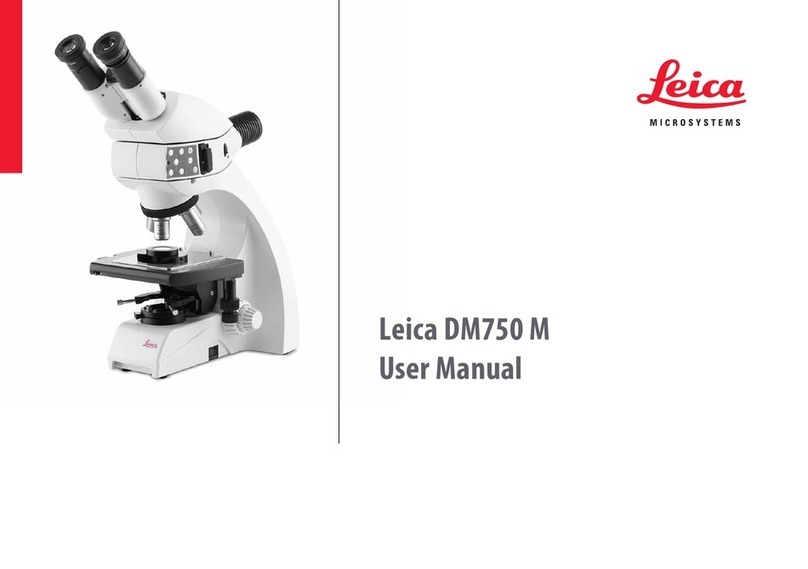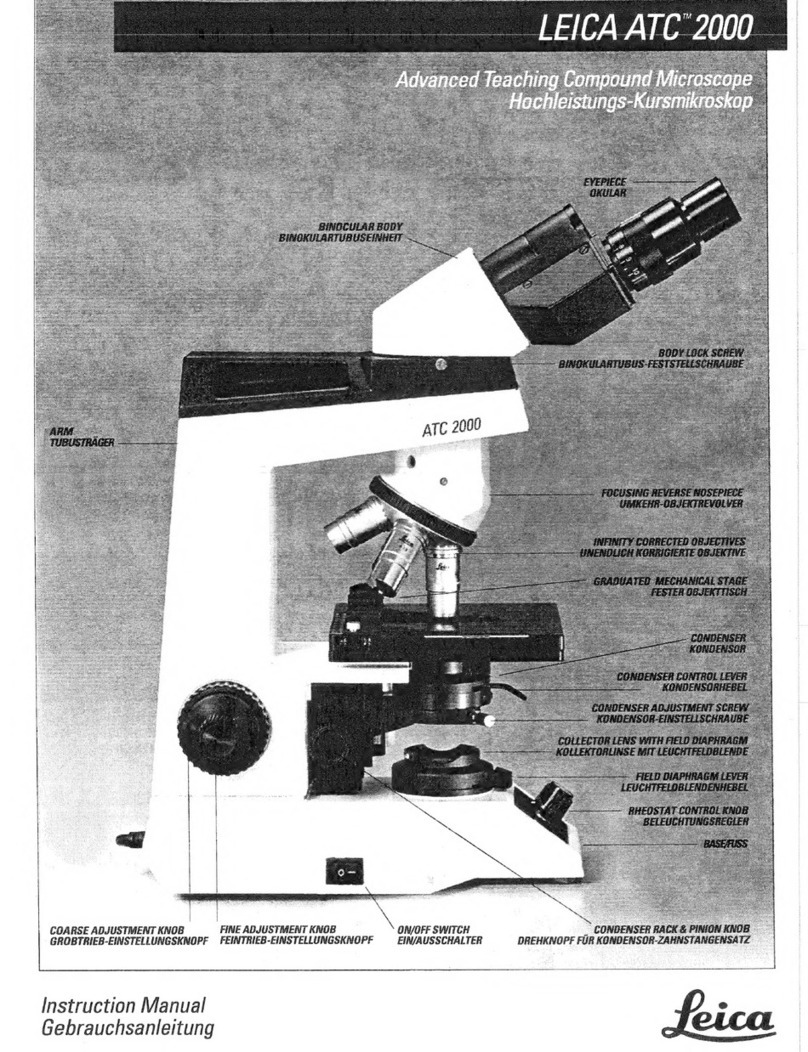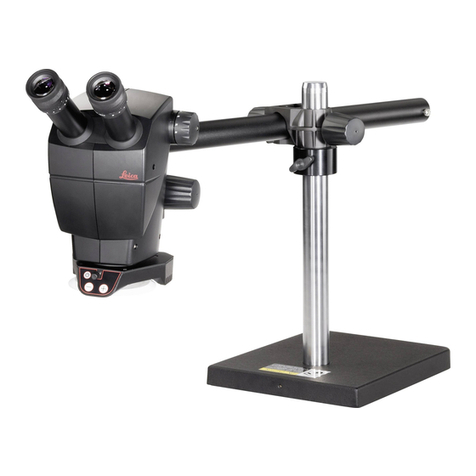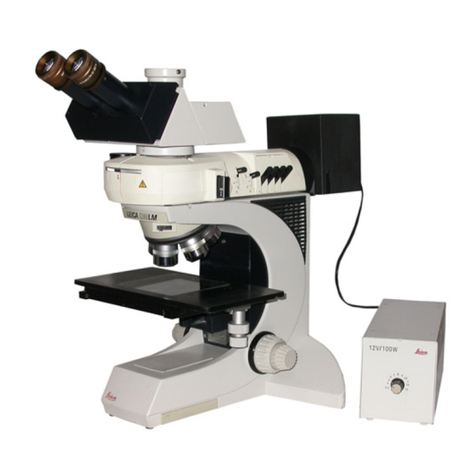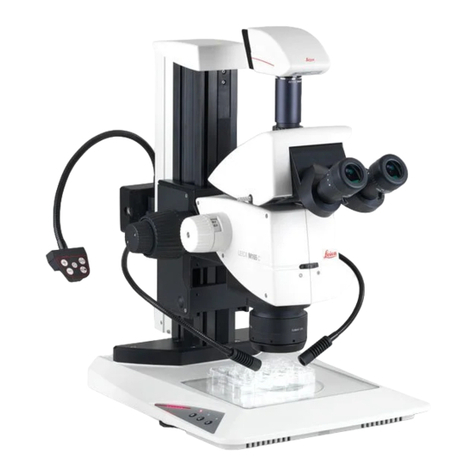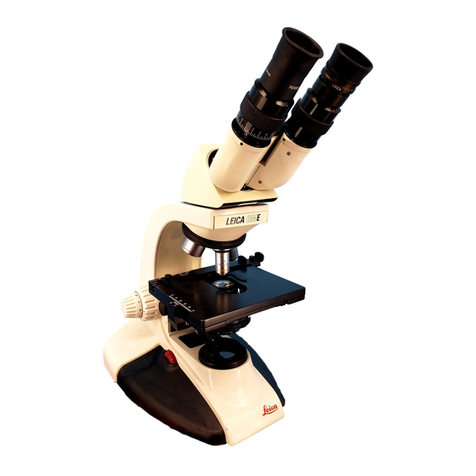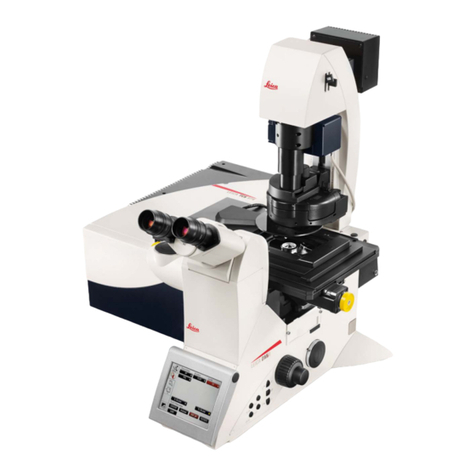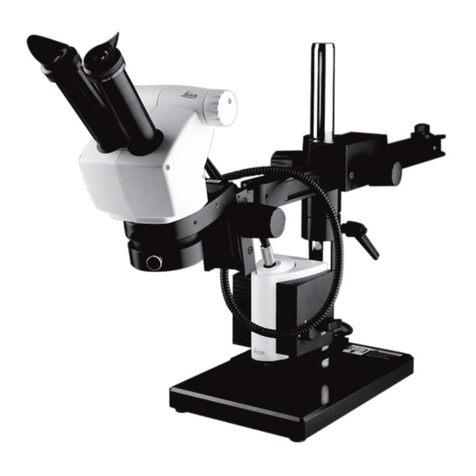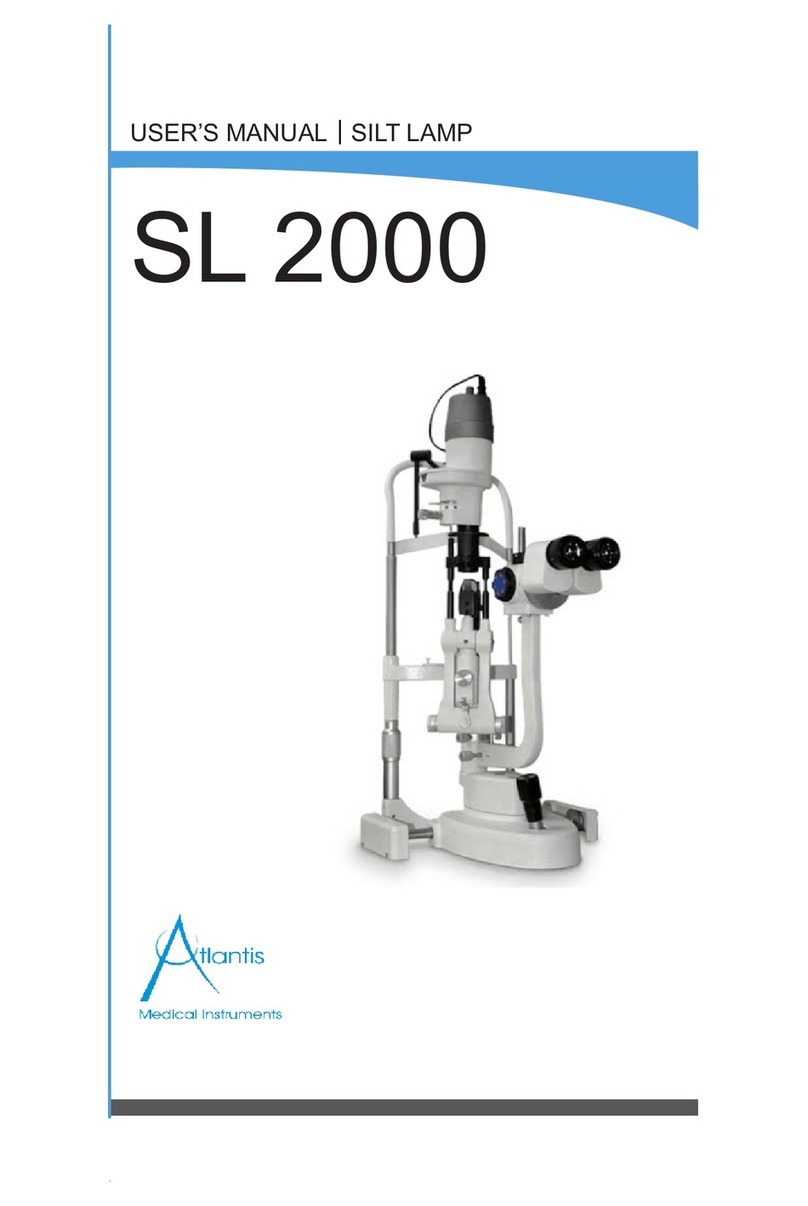
5
Contents
1. Important Notes about this
Instructions for use ..................................... 6
2. Intended Purpose of Microscopes........... 8
3. Safety Notes ............................................... 10
3.1 General Safety Notes................................ 10
3.2 Electrical Safety......................................... 11
3.3 Type Labels ................................................. 12
3.4 Notes on Handling Light Sources............ 13
3.5 Notes on handling immersion oil............. 13
3.6 Notes on handling acids and bases........ 13
3.7 Disposal....................................................... 13
4. Overview of the Instrument ..................... 14
5. Unpacking................................................... 21
6. Assembling the Microscope ................... 23
6.1 Attaching the condensers........................ 23
6.2 Adjusting the transmitted light
illumination column.................................... 23
6.3 Eyepieces and graticules* ...................... 24
6.4 Objectives.................................................... 25
6.5 Inserting the filter....................................... 25
6.6 Object guide................................................ 25
6.7 Light source for the transmitted
light axis....................................................... 26
6.8 Electrical connection of the microscope26
7. Assembling the Options ........................... 27
7.1 Inserting the phase contrast slider on the
transmitted light illumination carrier* .... 27
7.2 Mount the camera system........................ 27
7.3 Mount the camera IR reflection shield... 28
8. Operation..................................................... 29
8.1 Basic settings for transmitted light......... 29
8.2 Objectives.................................................... 31
8.3 Transmitted light......................................... 32
8.4 Phase contrast ........................................... 34
8.5 Camera ........................................................ 34
9. Trouble Shooting........................................ 35
10. Care of the Microscope............................ 37
10.1 Dust Cover................................................... 37
10.2 Cleaning....................................................... 37
12.3 Handling Acids and Bases ....................... 38
11. Technical Description .............................. 39
12. EU Declaration of Conformity.................. 44

